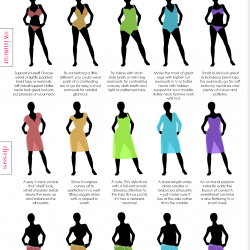
Some human social orders, similar to the various social classes of the Arctic Circle, generally make their Women’s clothing absolutely or orchestrated and further developed stows away and skins. Various social orders improved or replaced calfskin and skins with material: woven, weaved, or twined from various animal and vegetable strands including downy, fabric, cotton, silk, hemp, and leather lingerie . Yet present-day clients may think little of the making of Women’s clothing for real, making surface by hand is a dull and work genuine cycle including fiber making, turning, and weaving. The material business rushed to be robotized – with the filled loom – during the Industrial Revolution.
Different social orders have created various techniques for making articles of clothing out of material. One technique fundamentally incorporates hanging the texture. Numerous people wore, and still wear, garments including square states of texture wrapped to fit – for example, the dhoti for men and the sari for women in the pieces of clothing may essentially be limited dhoti and sari; or execute pins or belts to hold the pieces of clothing set up kilt and sarong. The material excess parts are entire, and people of various sizes can wear the garment.
![]()
Another philosophy incorporates assessing, cutting, and sewing the material by hand or with a sewing machine. Women’s clothing can be cut from a sewing plan and changed by a tailor to the wearer’s assessments. An adaptable sewing life measured model or dress construction is used to make impeccably estimated Women’s clothing. If the surface is expensive, the tailor endeavors to use the entirety of the texture square shape in building the Women’s clothing; Customary European models for shirts and chemises embrace this technique. These extras can similarly be reused to make intertwined pockets, covers, vests, and skirts.
Women clothing as comfort :
- Snappy comfort: Visual insight is affected by concealing, surface turn of events, style, garment fit, plan similitude and finish of Women’s clothing material. Slick comfort is fundamental for mental and social comfort.
It is a property of material materials that makes it easy by staying aware of clamminess and warm levels in a human’s resting and dynamic states. The assurance of material in a general sense impacts the comfort of the wearer. Various material strands have wonderful properties that make them sensible for use in various conditions. Typical strands are breathable and ingest clamminess, and produced fibers are hydrophobic; they rebuff sogginess and don’t allow air to pass. Different conditions demand a various selection of Women’s clothing materials. Subsequently, the legitimate choice is critical. The huge determinants that sway thermophysiological comfort are vulnerable turn of events, warmth, and clamminess move rate.
- Warm comfort: One fundamental norm for our physiological necessities is warm comfort. The glow dispersal practicality of Women’s clothing gives the wearer neither an especially hot nor freezing feel. The best temperature for the warm comfort of the skin surface is someplace in the scope of 28 and 30 degrees Celsius, i.e., an unbiased temperature. Thermophysiology reacts whenever the temperature falls underneath or outperforms the unbiased point on either side; it is discomforting under at least 28-30 degrees. Women’s clothing keeps a warm harmony; it keeps the skin dry and cool. It helps with keeping the body away from overheating while simultaneously avoiding heat from the environment.
- Clamminess comfort: Moisture comfort is the balance of a sticky sensation. As shown by Hollies’ assessment, it feels abnormal when more than “half to 65% of the body is wet.”
